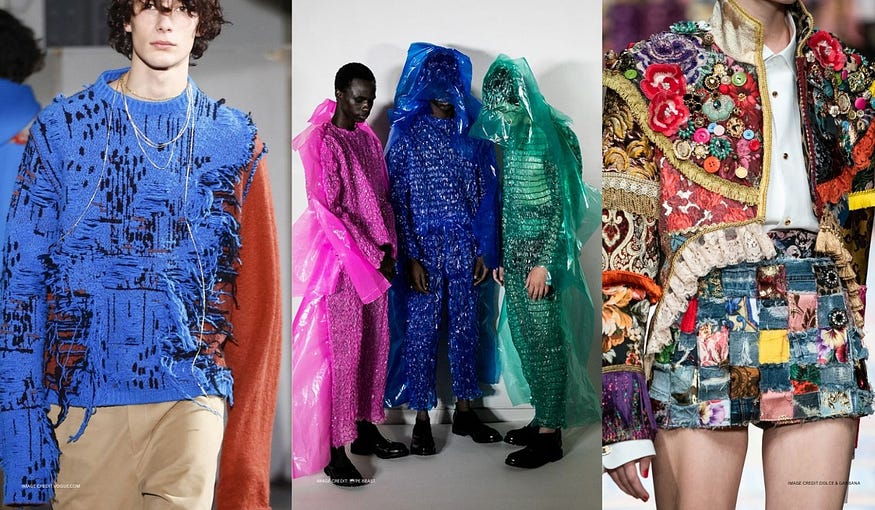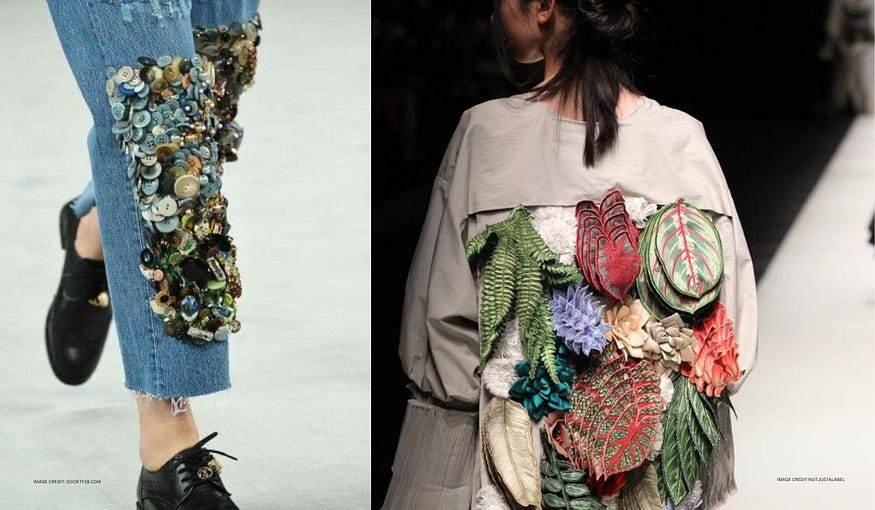Introduction:
In a time when awareness about the environmental impact of the fashion industry is increasing each day, sustainable fashion has emerged as a promising solution. Brands are constantly coming up with innovative ways to meet the rising demand for eco-friendly options by conscious customers. And one option that is gaining popularity is using deadstock fabrics. Using material that others have discarded as waste stops it from going to landfills or burning. Though a sustainable solution to overproduction and textile waste, deadstock has its own cons. Let’s explore the world of Deadstock in this blog, its benefits & drawbacks, its role in fighting fast fashion and growing usage among designers.
Understanding Deadstock Fabrics:

Deadstock fabrics refer to materials or garments that are left unused or unsold, due to overproduction or minor defects that could not meet quality control standards. The fashion industry’s rapid production and changing fashion trends lead to a large amount of excess materials. Some sustainable brands are choosing to use them creatively instead of discarding them, thus reducing environmental impact.
The Benefits of Using Deadstock Fabrics:

Reduction in textile waste: By incorporating deadstock fabrics in apparel production, brands contribute to reducing textile waste, conserving resources, and mitigating environmental harm. Using existing materials lowers the demand for fresh textiles, hence reducing water consumption and carbon emissions associated with manufacturing new textiles.
Reduction in Water and Carbon Footprint: The fashion industry is infamous for its massive water and carbon footprint. By repurposing deadstock, brands can lower their environmental impact and contribute to sustainable practices.
Encouraging Creativity: Deadstock fabrics often come in limited quantities. Hence brands have to be creative while using them for production and it results in unique, one-of-a-kind products. This encourages creativity and offers consumers something exclusive and special.
The Downsides of Using Deadstock Fabrics:

Lack of Transparency: One of the challenges with deadstock fabrics lies in tracing their origins. Brands may not always know where the fabrics came from or the conditions in which they were produced. Ensuring ethical sourcing can be difficult.
Uncertain Destination: Brands using deadstock fabrics cannot guarantee that these materials will not end up as waste eventually. While they aim to repurpose the fabrics, there’s a chance that they might still end up in landfills if not utilized.
Incomplete Sustainability Solution: Although deadstock fabrics help reduce waste, they do not address the initial environmental impact of fabric production. Brands should continue to explore sustainable fabric development to achieve comprehensive sustainability goals.
The Role of Deadstock Fabrics in Fighting Fast Fashion:

The rise of fast fashion has led to excessive textile production, short garment lifespans, and significant waste. Deadstock fabrics provide an opportunity for brands to break away from the fast fashion cycle and adopt more sustainable practices. Utilizing deadstock fabrics encourages a circular economy where materials are reused and waste is minimized. Brands can use this approach to tackle overproduction and overconsumption, making fashion a more sustainable industry.
How Designers are Embracing Deadstock Fabrics:

The Pandemic’s Impact on Sustainability: The pandemic served as a turning point for the fashion industry, encouraging brands to reevaluate their practices and seek sustainable alternatives. Many designers and labels are now prioritizing the use of deadstock fabrics to create conscious collections.
Creating Unique Pieces: Designers are leveraging deadstock fabrics to create one-of-a-kind unique designs that resonate with environmentally conscious consumers. These designer pieces offer both exclusivity and sustainability.
Overcoming Challenges:
While deadstock fabrics are gaining traction, some concerns exist, such as the potential for intentional overproduction by factories to cater to sustainable brands. Designers must integrate deadstock usage into a broader strategy of sustainable practices.
Conclusion:

Deadstock fabrics have emerged as a promising solution in the quest to attain sustainability in fashion. Repurposing existing unused materials will lead to reduced waste and help in promoting a circular economy. Increasing use of deadstock fabrics signals a positive shift towards a more eco-friendly fashion. Consumers are also playing a significant role in this shift by choosing brands that follow sustainable practices.

